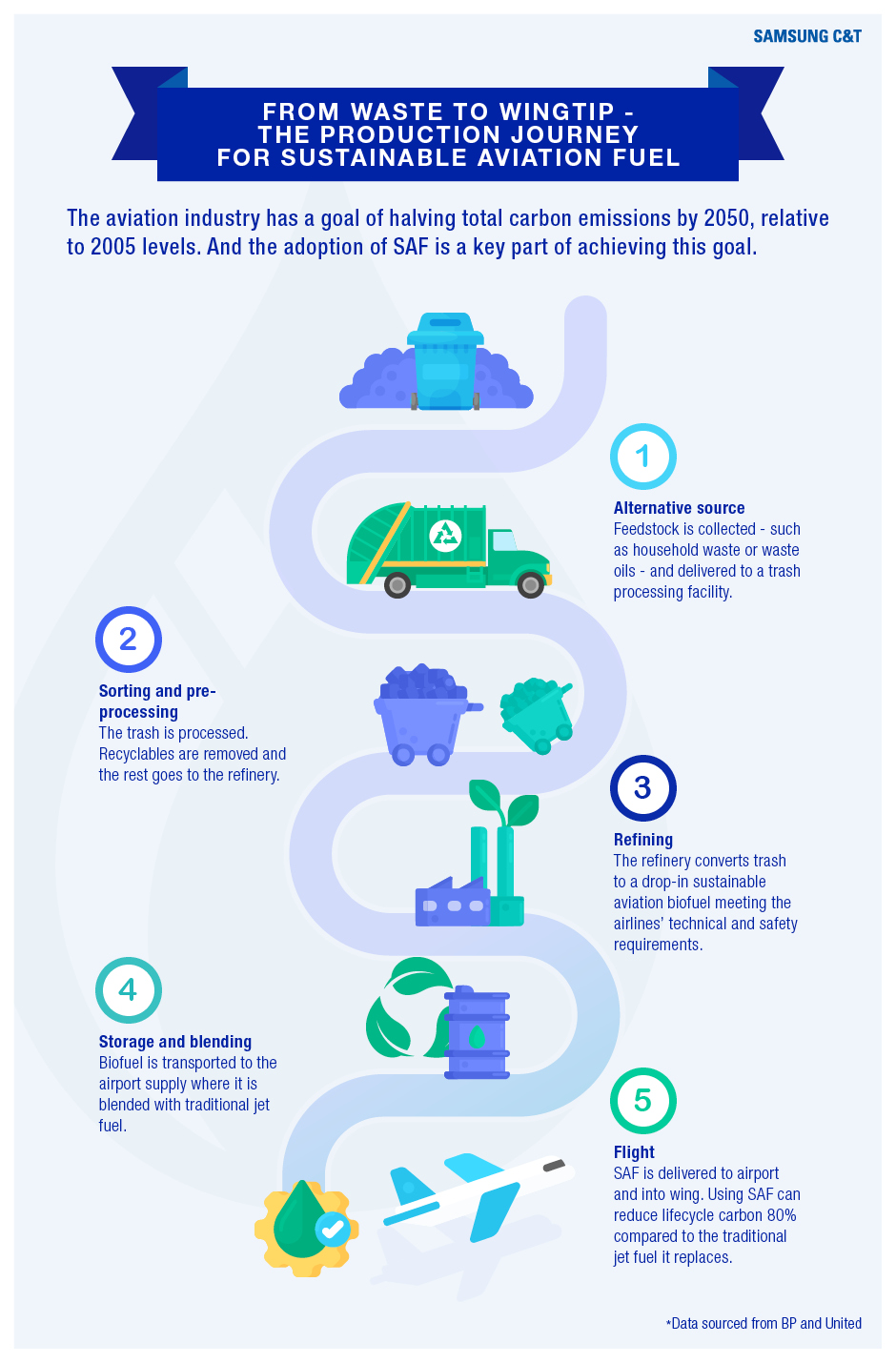
After COVID-19 wiped out 15 years of global air passenger capacity growth, there have been continued signs of the aviation industry’s recovery. In fact, global passenger and air cargo traffic is expected to increase 4 percent per year until 2040.
The trouble is, planes have an outsize impact on climate change – being responsible for 2.5 percent of global carbon dioxide emissions as of 2019.
So there’s growing pressure on the aviation industry to fly planes using a clean alternative to fossil fuels. Thankfully, sustainable aviation fuel (SAF) is starting to be taken more seriously.
What is sustainable aviation fuel?
Though chemically similar to conventional fossil jet fuel, SAF is produced from sources such as biofuel and is said to be capable of cutting the carbon footprint of airlines by up to 80 percent.
Common examples of SAF sources include cooking oil, paper and textiles, and even food. In other words, a lot of the waste that we produce can be converted into SAF.
There are four main technologies used to produce SAF. The Oil-to-Jet Fuels (OTJ) process is considered to be the most advanced in terms of commercial readiness, and involves the conversion of biomass feeds such as vegetable oils through heat and hydrogen pressure.
Regarding the other options, the Gas-to-Jet Fuels (GTJ) process draws on plant sources as well as agricultural and municipal waste, which then go through gasification and further conversion into SAF. And then you have the processes of Alcohol-to-Jet Fuels (ATJ) and Sugars-to-Jet Fuels (STJ), which are based on biomass-derived alcohols and various other sugars.
The trend towards sustainability in the air
Interest in using SAF has been building for some time. In 2010, KLM became the world’s first airline to operate a commercial flight using sustainable biofuel.
We have seen an increasing number of airlines move to blend SAF with jet fuel since then, including Singapore Airlines, based on an announcement just this month. Moreover, United Airlines succeeded in operating its first passenger plane using 100 percent SAF in December, showing there is no operational difference between SAF and conventional aviation fuel.
Changing regulations also mean there is increasing pressure to make use of SAF. European Union rules will ensure all flights leaving European airports have to use at least 2 percent SAF by 2025 – and that portion will increase to 63 percent by 2050. Moreover, with the U.S. boosting incentives to increase the production of SAF to at least 3 billion gallons (11 billion liters) per year by 2030, Boeing is committed to making sure that all the commercial airplanes it delivers will be certified to fly on 100 percent SAF within the same time frame.
Rising above the turbulence
By 2019, 13 million gallons (49 million liters) of SAF helped power planes, but that was just 0.01 percent of global aviation fuel. The main obstacle has been the cost of SAF, which can be four or five times more expensive than conventional aviation fuel.
But in addition to government incentives and regulations, conventional aviation fuel has been under pressure due to rising oil prices – and that’s a particularly pressing issue for trading companies because air cargo demand actually increased 6.9 percent last year compared to before the pandemic in 2019.
Broadly speaking, trading companies can also help to lower biofuel costs by supporting related supply chains and Samsung C&T is paying attention to the rising business opportunities in this area. Aside from SAF, Samsung C&T has been active in the general area of biofuels. We also previously addressed the company’s interest in turning waste into energy by trading wood pellets. In addition, Samsung C&T has been working with energy companies that develop biofuel solutions.








